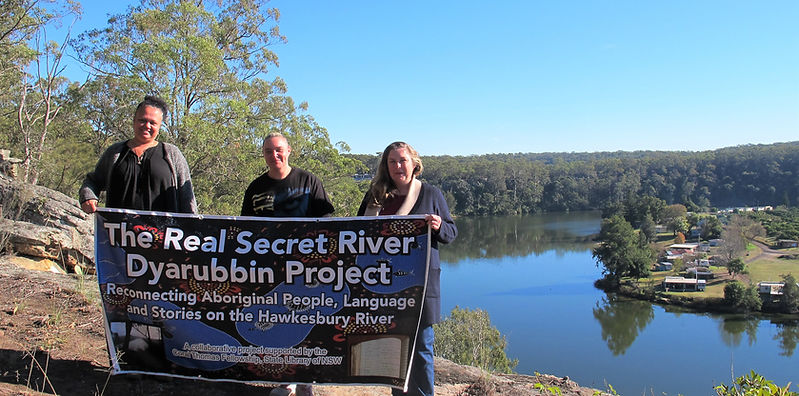
ABOUT THIS PROJECT
Ganangdayi, the Macdonald River (Joy Lai)
.jpg)
First page of Rev. John McGarvie’s ‘List of Native Names’ (Mitchell Library)
Dyarubbin: The Real Secret River was inspired by an extraordinary discovery. In 2017, Professor Grace Karskens from the University of New South Wales came across a long-lost document in the Mitchell Library: a list of 178 Aboriginal names for places on Dyarubbin. The list was compiled in 1829 by local Presbyterian minister, the Reverend John McGarvie.
Why is this list so significant? Because after two centuries of colonisation, only a handful of Aboriginal names survive in common use on the middle reaches of Dyarubbin today. Reverend McGarvie’s list is a gift, the key to rediscovering the lost and hidden Aboriginal history of Dyarubbin.
In 2018-2020, Grace worked with Darug women Leanne Watson, Erin Wilkins, Jasmine Seymour and Rhiannon Wright, and Darug-Darkinjung woman Cindy Laws, on a collaborative project to research, locate and map the names on the Reverend McGarvie’s list.
Funded by the State Library of New South Wales’ Coral Thomas Fellowship the project brought together the Darug and Darkinjung knowledge-holders with historians, linguists, archaeologists and geologists.
So far, we have relocated and mapped over 90 of the place names. McGarvie’s list also included the Darug/Darkinjung name for Dyarubbin’s tributary, the Macdonald River: Ganangdayi.
We are delighted to announce that in June 2022, The Real Secret River Dyarubbin Project co-won the inaugural Public Environmental History Prize! Thank you Australian & Aotearoa New Zealand Environmental History Network! https://www.environmentalhistory-au-nz.org/2022/07/inaugural-public-environmental-history-prize-awarded/

Jasmine Seymour, Gurangatty

Dyarubbin project team members Leanne Watson, Erin Wilkins and Jasmine Seymour with our project banner (Grace Karskens)
WHY ARE PLACE NAMES IMPORTANT?
Place names are wayfinders and memory-aides. People need them to communicate shared knowledge of places and how to get to them.
Place names are as culturally significant as rock art and artefacts. Every place and distinctive feature across Australia had/has an Aboriginal name. Often place names are part of songlines which narrate the mythical journeys of Ancestral Beings in the Dreaming, their creative exploits and activities. Or the names say something about places and why they are important.
Researching the meanings of the place names on the McGarvie list was an important part of the project. The names did turn out to be clues to the Aboriginal life and culture on the river as well as the local environments: the forests, plants and animals; places to find ochre for artwork, or timber to make tools and weapons; saltwater and freshwater zones; men’s and women’s places; and areas of profound spiritual significance.
We are hoping these place names will come back into use and become part of the landscape of Dyarubbin once more. Naming and dual-naming projects are now underway with the Geographic Names Board of New South Wales (see Connecting Projects).

Leanne Mulgo Watson, Nge Gnorang meaning spiritual place